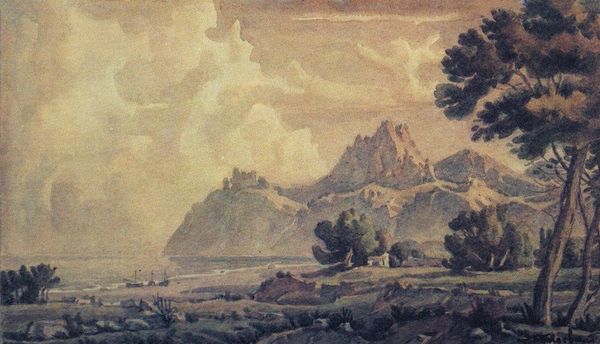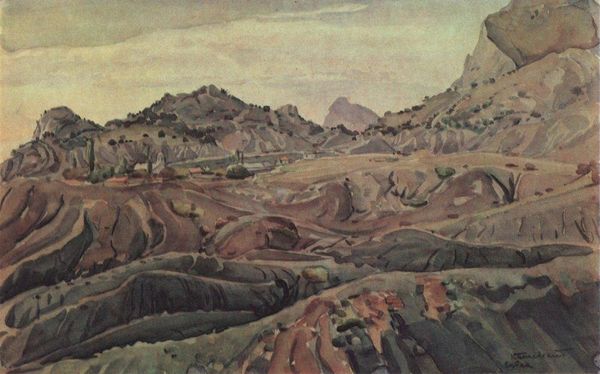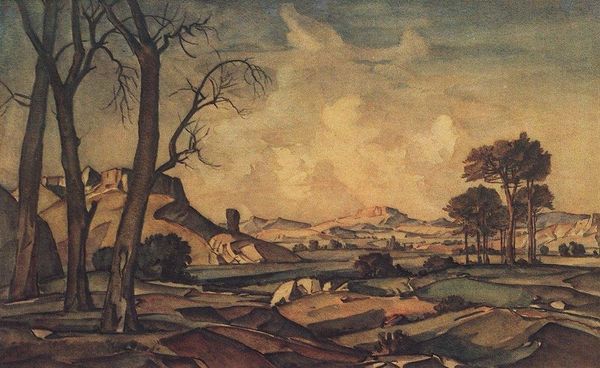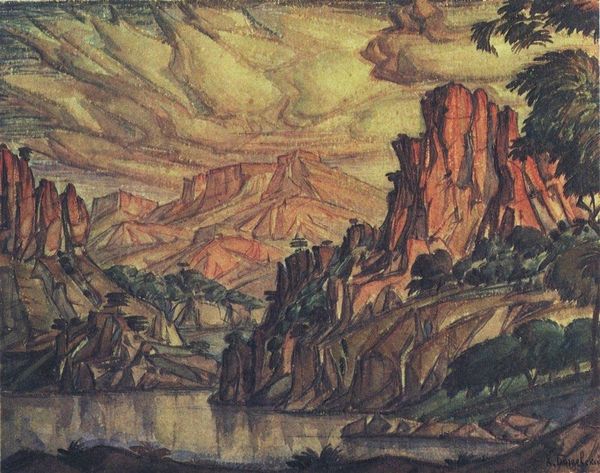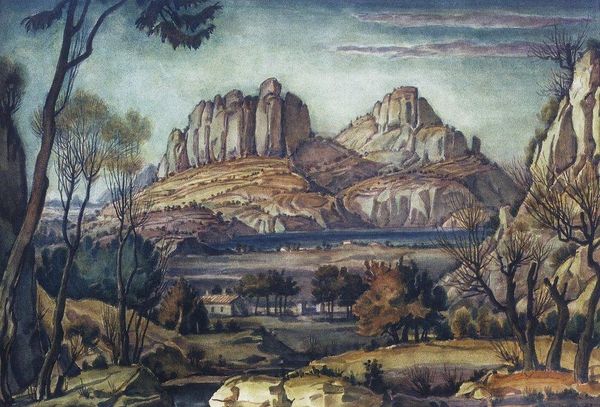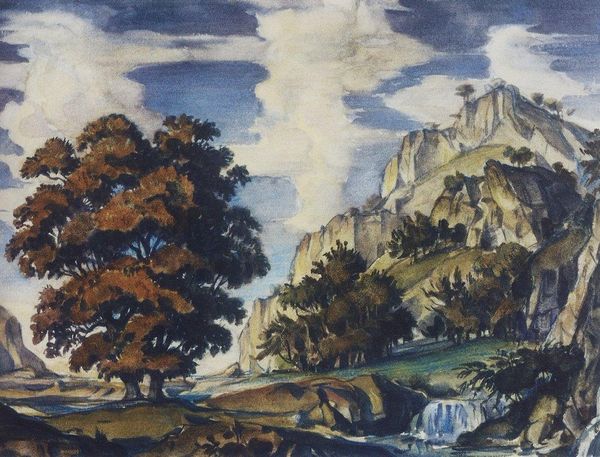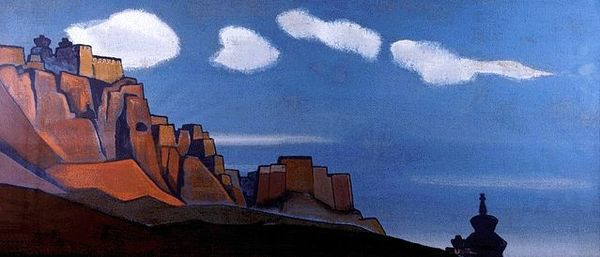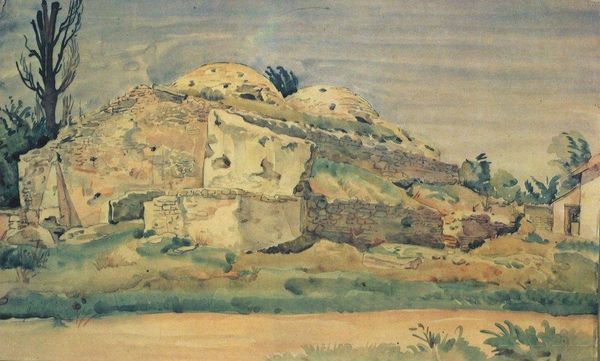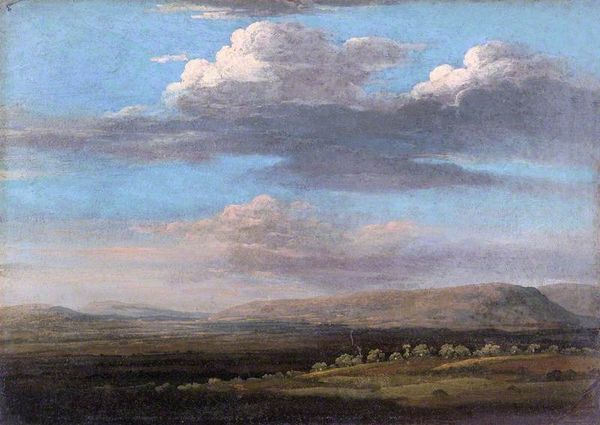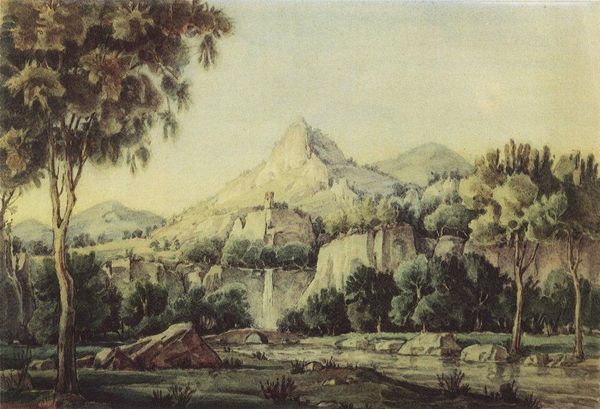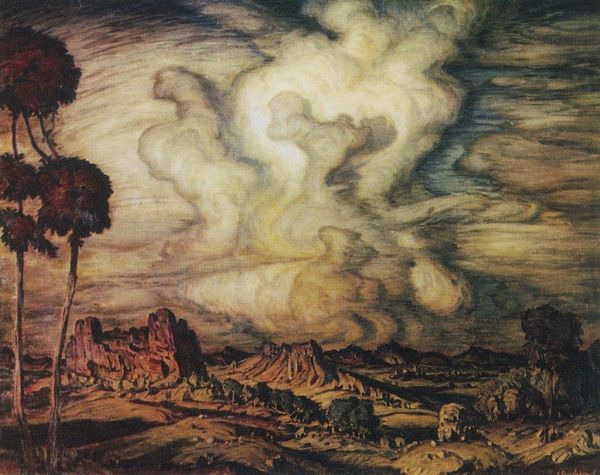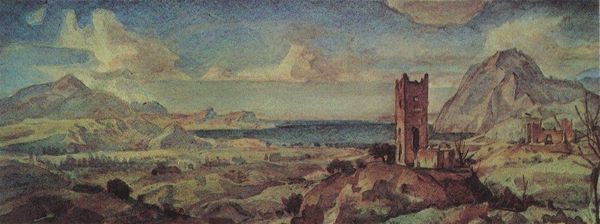
Copyright: Public domain
Curator: Here we have Konstantin Bogaevsky's "Town in the Valley," painted in 1935, rendered delicately in watercolor. Editor: It has such a haunting, almost desolate feel. The ochre palette is interesting, creating a sepia-toned world that feels distant, both in space and time. Curator: Indeed. Notice how Bogaevsky orchestrates a composition led by geological structures; these formations dictate the perspective and the light that illuminates the valley, guiding the viewer’s gaze. It’s fascinating how he uses color to build form. Editor: It's hard not to interpret that as symbolic, though. In 1935, Stalin’s repressions were intensifying. Bogaevsky, rooted in the Russian avant-garde, would have been witnessing profound societal upheaval, as well as government scrutiny. It's impossible to view this seemingly serene landscape outside the realm of a brewing storm, the desolation mirroring the psychological state of many at the time. Curator: While your point is valid, one must also recognize the influence of symbolism inherent to Modernist Russian landscape. Bogaevsky was less interested in direct socio-political commentary and instead focused on elemental form and primordial archetypes. Observe, for example, the contrast between the rough-hewn texture of the foreground trees with the sharp lines of the architecture. Editor: Precisely, it could very well signal tension! The very notion of what one pictures when thinking of "landscape" is now disrupted in this time, even in art. A ruined landscape suggests loss—perhaps the loss of hope within a totalitarian system. I wonder how this location was perceived back then? Curator: We cannot ignore that Bogaevsky synthesizes elements of realism with the dramatic, a style he mastered well before the socio-political climate reached its most intense peak. The arrangement of forms supersedes any need for direct allegory. Editor: But is art ever devoid of its socio-historical moment? In that time, even an affinity to ‘primordial archetypes’ or emphasis on 'form' and 'structure' reads as escapism or resistance. We can consider how even through these aesthetic decisions he conveys emotion. Curator: Food for thought. A work which balances an intricate focus on landscape while existing in a troubled, transformative historical moment. Editor: It serves as a powerful reminder that every brushstroke can echo a period’s loudest and quietest stories.
Comments
No comments
Be the first to comment and join the conversation on the ultimate creative platform.

